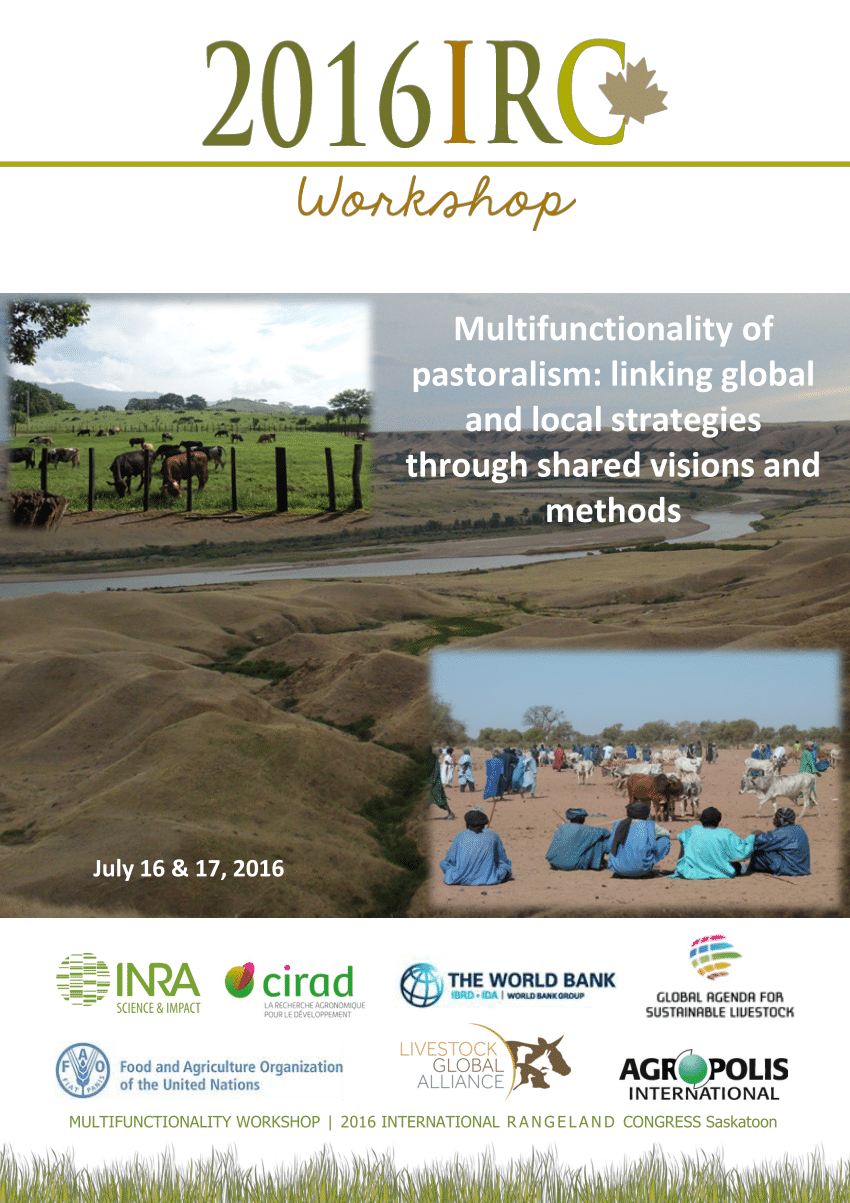Ver ítem
- xmlui.general.dspace_homeCentros e Institutos de InvestigaciónCIPAF. Centro de Investigación y Desarrollo Tecnológico para la Agricultura FamiliarIPAF NOAPresentaciones a Congresosxmlui.ArtifactBrowser.ItemViewer.trail
- Inicio
- Centros e Institutos de Investigación
- CIPAF. Centro de Investigación y Desarrollo Tecnológico para la Agricultura Familiar
- IPAF NOA
- Presentaciones a Congresos
- Ver ítem
Andean mutual breeding, multifunctional services and pastoral strategies against drought in the Argentine Puna Grasslands
Resumen
Current debates about multifunctional pastoral systems in the drylands of the
world have great importance in facing climate change that leads to longer and
more severe droughts, increased temperatures, and changes in rainfall, among
other phenomena in arid or desert areas. There are different dynamics and
pastoralist processes all over the world. Let's take for example the situation in
the European Union, where shepherds are seen as economic agents
[ver mas...]
Current debates about multifunctional pastoral systems in the drylands of the
world have great importance in facing climate change that leads to longer and
more severe droughts, increased temperatures, and changes in rainfall, among
other phenomena in arid or desert areas. There are different dynamics and
pastoralist processes all over the world. Let's take for example the situation in
the European Union, where shepherds are seen as economic agents that
produce high-quality food and that play an important role in the conservation of
the environment (Tchakerian, 2008; Charbonnier, 2012). Their flocks, herds,
and territories are subsidized in order to promote the occupation of rural areas,
to enhance their popularity and support, to foster local identity, as well as
improve conservation of landscapes. On the contrary, in Argentina, the
shepherds that live in areas not suitable for agriculture, located in the vast
national area representing the Argentine arid diagonal, are considered
responsible for so-called anthropic phenomena of desertification (Quiroga
Mendiola, 2013). We propose in this paper to question this assessment, by
highlighting the main aspects of multifunctional-service pastoralism, especially
in coping with periods of prolonged drought. We also seek to foster dialogue
through the approach of “pastoralism multifunctional services” in the Southern
Andes, with a new approach to “Andean mutual breeding” based on the
complete integration of natural and social systems.
[Cerrar]

Fuente
Workshop “Multifunctionality of pastoralism: linking global and local strategies through shared visions and methods”, Saskatoon (Canadá), 16 y 17 de julio de 2016
Fecha
2018-07
Editorial
Global Agenda for Sustainable Livestock (GASL)
Formato
pdf
Tipo de documento
documento de conferencia
Palabras Claves
Derechos de acceso
Abierto
 Excepto donde se diga explicitamente, este item se publica bajo la siguiente descripción: Creative Commons Attribution-NonCommercial-ShareAlike 2.5 Unported (CC BY-NC-SA 2.5)
Excepto donde se diga explicitamente, este item se publica bajo la siguiente descripción: Creative Commons Attribution-NonCommercial-ShareAlike 2.5 Unported (CC BY-NC-SA 2.5)


